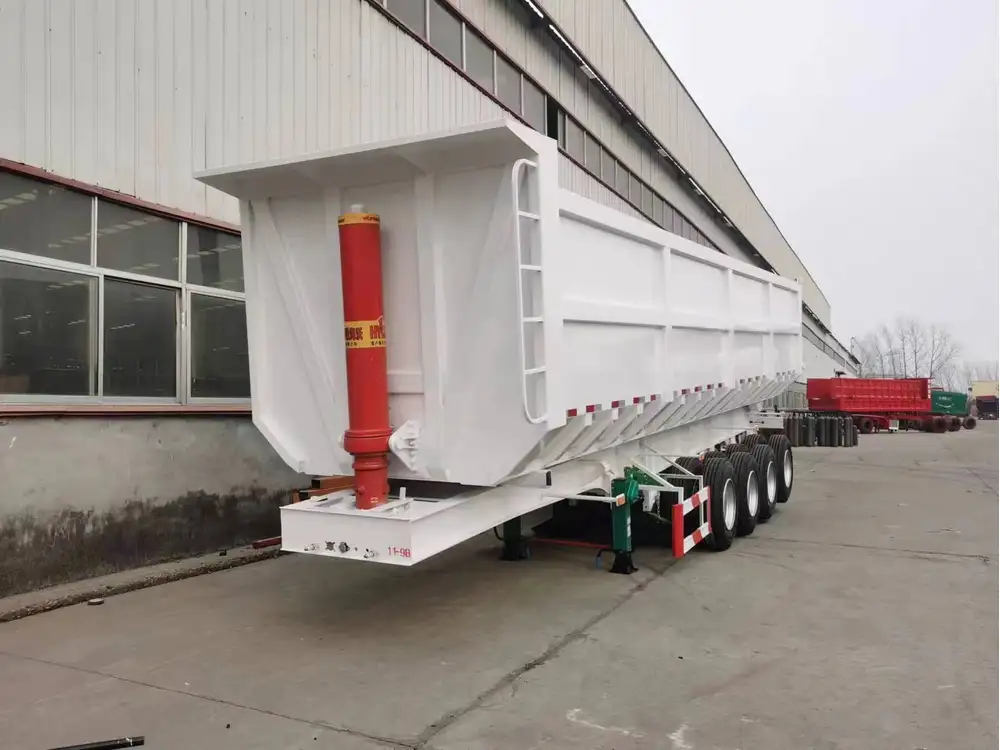When it comes to the world of semi-trailers, understanding how to wire a 48-foot flatbed trailer correctly is essential for ensuring both functionality and safety. This comprehensive guide will delve into the intricacies of trailer wiring, providing you with practical advice, step-by-step instructions, and detailed insights that will facilitate a successful wiring job.
Understanding Trailer Wiring Systems
The Basics of Trailer Wiring
Wiring a 48-foot flatbed trailer is fundamentally about connecting the trailer’s lighting system and brake functions to the vehicle it is hitched to. A typical semi-trailer utilizes a 7-pin connector, which facilitates the transfer of power necessary for turn signals, brake lights, and running lights.

Wiring Color Codes
Before diving into the wiring process, familiarizing yourself with the standard color codes for trailer wiring is critical. Here is a concise breakdown:
| Wire Color | Function |
|---|---|
| Brown | Tail lights |
| Yellow | Left turn signal |
| Green | Right turn signal |
| White | Ground |
| Red | Brake lights |
| Blue | Electric brakes (if applicable) |
| Black | 12V power supply |
Having a clear understanding of these colors will facilitate a smoother installation process.
Tools and Materials Required
Before starting your wiring project, gather the following tools and materials:
Tools:
- Wire strippers
- Crimping tool
- Soldering iron (optional)
- Heat shrink tubing
- Electrical tape
- Multimeter
Materials:
- Wiring harness (7-pin connector)
- Electrical connectors (butt connectors, ring terminals)
- Heat shrink tubing
- Additional wiring (if needed)
Step-by-Step Wiring Instructions

Step 1: Preparing the Trailer
- Safety First: Always disconnect the battery before beginning any electrical work to prevent shocks and shorts.
- Inspect the Trailer: Look for any existing damage to the wiring and ensure all lights are functional.
- Clear the Work Area: Make sure you have ample space to work on the trailer without distractions.
Step 2: Access the Wiring Area
- Locate the junction box, which is typically found at the front of the trailer, near the kingpin or at the rear near the lights.
- If there is an existing wiring harness, carefully disconnect it. Take note of how it is wired or take a photo for reference.
Step 3: Connect the Wires
- Trim and Strip Wires: Use wire strippers to remove a short section of insulation from the ends of the new wires, exposing the copper underneath.
- Match Wires to Color Codes:
- Brown to tail lights: Connect the brown wire from the trailer to the appropriate connector.
- Yellow to left turn signal: Similarly, connect the yellow wire.
- Green to right turn signal.
- White ground wire should be connected to the trailer frame or a dedicated ground point.
- Red wire for brakes and blue for electric brakes if applicable.

Step 4: Securing Connections
- Use crimp connectors to secure each wire, ensuring a strong connection. If you are comfortable with soldering, that option is also acceptable for a more permanent solution.
- For added protection, apply heat shrink tubing over each connection and heat it to create a seal. This can prevent moisture from compromising your connections.
Step 5: Testing Connections
- Before permanently securing everything, reconnect the battery and use a multimeter to test each function. Ensure that each light illuminates correctly and that the braking system responds as expected.
- Have a helper activate the turn signals while you inspect the corresponding lights.
Step 6: Finalizing the Installation
- Secure All Wires: Use zip ties to keep wires tidy and avoid dragging. Ensure that wires are away from moving parts and high-heat sources.
- Wrap with Electrical Tape: Where necessary, wrap connections with electrical tape for extra protection.
- Reconnect Everything: Once satisfied that all connections are correct and secure, put everything back in place.

Troubleshooting Common Wiring Issues
Despite careful installation, issues may arise. Here are some common problems and solutions:
Problem: Lights Not Functioning
- Check Connections: Ensure that all wires are properly connected and not loose.
- Inspect Fuses: Look at the fuse box on the towing vehicle for blown fuses.
- Test Grounding: A poor ground connection can cause lights to malfunction. Verify that ground wires are clean and securely attached.
Problem: Brake Lights Stay On
- This issue often arises from a faulty brake switch on the towing vehicle. Test the switch and replace it if necessary.

Problem: Flickering Lights
- Flickering can indicate loose connections. Double-check all wiring joints and connectors.
Maintenance Tips for Trailer Wiring
Regular maintenance of your trailer wiring is crucial for longevity and safety:
- Inspect Regularly: Routinely check for wear and tear. Look for frayed wires and corrosion around connections.
- Protect from Elements: Use weatherproof connectors and enclosures to guard against moisture and dirt.
- Clean Ground Points: Ensure ground connections remain free from rust and debris to avoid electrical issues.
Safety Considerations
When working with electrical systems, it’s paramount to prioritize safety:
- Wear Protective Gear: Use gloves and goggles as necessary.
- Follow Manufacturer Guidelines: Ensure to comply with any specifications from the trailer manufacturer and local regulations.
- Don’t Overload: Always adhere to the electrical capacity of your trailer components to prevent overheating and failure.

Final Thoughts
Successfully wiring a 48-foot flatbed trailer is a skill every owner should possess. By following these comprehensive instructions, performing regular maintenance, and troubleshooting common issues effectively, we can ensure the safe and reliable operation of our trailers. Mastering these aspects not only enhances safety but also contributes positively towards operational efficiency, ultimately protecting your investments and ensuring peace of mind on the road.
This extensive approach goes beyond simply addressing the wiring process. It offers valuable insights into troubleshooting, maintenance, and safety, forming a holistic resource for both novice and experienced trailer owners. Emphasizing precision and attention to detail ensures that users are equipped with the knowledge necessary to execute confident and reliable wiring on their 48-foot flatbed trailers.



